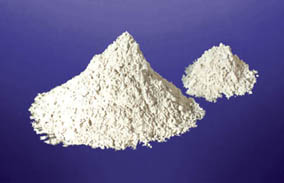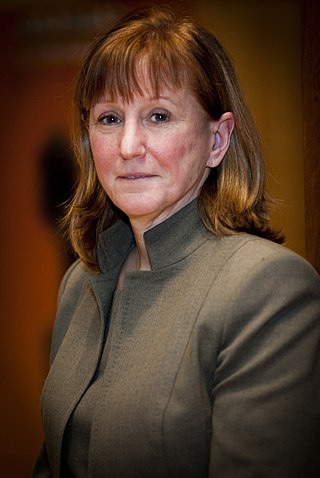Related Research Articles
Spintronics, also known as spin electronics, is the study of the intrinsic spin of the electron and its associated magnetic moment, in addition to its fundamental electronic charge, in solid-state devices. The field of spintronics concerns spin-charge coupling in metallic systems; the analogous effects in insulators fall into the field of multiferroics.

Pyroelectricity is a property of certain crystals which are naturally electrically polarized and as a result contain large electric fields. Pyroelectricity can be described as the ability of certain materials to generate a temporary voltage when they are heated or cooled. The change in temperature modifies the positions of the atoms slightly within the crystal structure, so that the polarization of the material changes. This polarization change gives rise to a voltage across the crystal. If the temperature stays constant at its new value, the pyroelectric voltage gradually disappears due to leakage current. The leakage can be due to electrons moving through the crystal, ions moving through the air, or current leaking through a voltmeter attached across the crystal.

In physics and materials science, the Curie temperature (TC), or Curie point, is the temperature above which certain materials lose their permanent magnetic properties, which can (in most cases) be replaced by induced magnetism. The Curie temperature is named after Pierre Curie, who showed that magnetism is lost at a critical temperature.

Epitaxy refers to a type of crystal growth or material deposition in which new crystalline layers are formed with one or more well-defined orientations with respect to the crystalline seed layer. The deposited crystalline film is called an epitaxial film or epitaxial layer. The relative orientation(s) of the epitaxial layer to the seed layer is defined in terms of the orientation of the crystal lattice of each material. For most epitaxial growths, the new layer is usually crystalline and each crystallographic domain of the overlayer must have a well-defined orientation relative to the substrate crystal structure. Epitaxy can involve single-crystal structures, although grain-to-grain epitaxy has been observed in granular films. For most technological applications, single-domain epitaxy, which is the growth of an overlayer crystal with one well-defined orientation with respect to the substrate crystal, is preferred. Epitaxy can also play an important role in the growth of superlattice structures.
Scanning probe microscopy (SPM) is a branch of microscopy that forms images of surfaces using a physical probe that scans the specimen. SPM was founded in 1981, with the invention of the scanning tunneling microscope, an instrument for imaging surfaces at the atomic level. The first successful scanning tunneling microscope experiment was done by Gerd Binnig and Heinrich Rohrer. The key to their success was using a feedback loop to regulate gap distance between the sample and the probe.
Organic semiconductors are solids whose building blocks are pi-bonded molecules or polymers made up by carbon and hydrogen atoms and – at times – heteroatoms such as nitrogen, sulfur and oxygen. They exist in the form of molecular crystals or amorphous thin films. In general, they are electrical insulators, but become semiconducting when charges are injected from appropriate electrodes or are introduced by doping or photoexcitation.

Aluminium nitride (AlN) is a solid nitride of aluminium. It has a high thermal conductivity of up to 321 W/(m·K) and is an electrical insulator. Its wurtzite phase (w-AlN) has a band gap of ~6 eV at room temperature and has a potential application in optoelectronics operating at deep ultraviolet frequencies.
Multiferroics are defined as materials that exhibit more than one of the primary ferroic properties in the same phase:

Isamu Akasaki was a Japanese engineer and physicist, specializing in the field of semiconductor technology and Nobel Prize laureate, best known for inventing the bright gallium nitride (GaN) p-n junction blue LED in 1989 and subsequently the high-brightness GaN blue LED as well.

David J. Smith is a Regents' Professor of physics at Arizona State University. He is an Australian experimental physicist and his research is focussed on using the electron microscope to study the microstructure of different materials. He is a pioneer in high-resolution relectron microscopy technique and is very well known in his field. His interests are focused on thin films, nanostructures, novel materials and magnetism.

National Institute for Materials Science is an Independent Administrative Institution and one of the largest scientific research centers in Japan.
Indium aluminium nitride (InAlN) is a direct bandgap semiconductor material used in the manufacture of electronic and photonic devices. It is part of the III-V group of semiconductors, being an alloy of indium nitride and aluminium nitride, and is closely related to the more widely used gallium nitride. It is of special interest in applications requiring good stability and reliability, owing to its large direct bandgap and ability to maintain operation at temperatures of up to 1000 °C., making it of particular interest to areas such as the space industry. InAlN high-electron-mobility transistors (HEMTs) are attractive candidates for such applications owing to the ability of InAlN to lattice-match to gallium nitride, eliminating a reported failure route in the closely related aluminium gallium nitride HEMTs.
Carol Trager-Cowan is a Scottish physicist who is a Reader in physics and Science Communicator at the University of Strathclyde. She works on scanning electron microscopy, including Electron backscatter diffraction (EBSD), diffraction contrast and cathodoluminescence imaging.

Dawn Austin Bonnell is the Senior Vice Provost for Research at the University of Pennsylvania. She has previously served as the Founding Director of the National Science Foundation Nano–Bio Interface Center, Vice President of the American Ceramic Society and President of the American Vacuum Society. In 2024, she was elected to the American Philosophical Society.
Ursel Bangert is the Bernal Chair in Microscopy and Imaging at the University of Limerick as well as a Lecturer at the University of Manchester, of Research Fellow at Surrey University, and of PhD student at the Universität Köln. She develops advanced characterisation techniques such as transmission electron microscopy for the atomic scale imaging of novel materials. Her research outcomes include achievement of TEM imaging and electron energy loss spectroscopy on the sub-atomic scale to reveal structure and dynamics of individual atoms

Miaofang Chi is a distinguished scientist at the Center for Nanophase Materials Sciences in Oak Ridge National Laboratory. Her primary research interests are understanding interfacial charge transfer and mass transport behavior in energy and quantum materials and systems by advancing and employing novel electron microscopy techniques, such as in situ and cryogenic scanning transmission electron microscopy. She was awarded the 2016 Microscopy Society of America Burton Medal and the 2019 Microanalysis Society Kurt Heinrich Award. She was named to Clarivate's list of Highly Cited Researchers in 2018 and 2020.
Xiaodong Zou is a Chinese-Swedish chemist who is a professor at Stockholm University. Her research considers the development of electron diffraction for the three dimensional characterisation of materials. She is a member of the Nobel Committee for Chemistry. She was elected to the Royal Swedish Academy of Sciences and the Royal Swedish Academy of Engineering Sciences.

Jeremy Levy is an American physicist who is a Distinguished Professor of Physics at the University of Pittsburgh.
Joan M. Redwing is an American materials scientist known for research on electronic and optoelectronic materials, including the processing of semiconductor thin films and nanomaterials by metalorganic chemical vapor deposition (MOCVD). Redwing is a distinguished professor of materials science and engineering and electrical engineering at Pennsylvania State University and director of the university's 2D Crystal Consortium research facility. She is a fellow of the American Association for the Advancement of Science, the American Physical Society, and the Materials Research Society.

Epitaxy refers to a type of crystal growth or material deposition in which new crystalline layers are formed with one or more well-defined orientations with respect to the crystalline seed layer. The deposited crystalline film is called an epitaxial film or epitaxial layer. Epitaxial growth and semiconductor device fabrication are technologies used to develop stacked crystalline layers of different materials with specific semiconductor properties on a crystalline substrate, commonly silicon or silicon carbide (SiC) materials, to achieve the desired performance of the microelectronic devices, such as transistors and diodes. The crystal structure of these layers is with high density of imperfections, such as dislocations and stacking faults. Therefore the microelectronic engineers and technologists have developed different techniques to eliminate or minimize the density of these structural defects in order to improve the microelectronic devices operation. One such approach is Selective Area Growth technology.
References
- 1 2 3 "Ideas for Life: Ana Sanchez" (PDF).
- ↑ "Research Interests and Projects". warwick.ac.uk. Retrieved 2024-07-22.
- 1 2 "Tiny electrical vortexes bridge gap between ferroelectric and ferromagnetic materials". warwick.ac.uk. Retrieved 2024-07-22.
This article needs additional or more specific categories .(January 2025) |